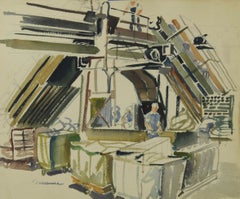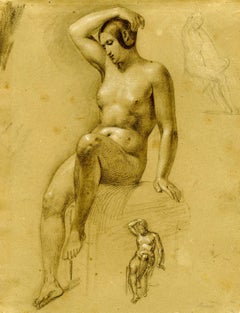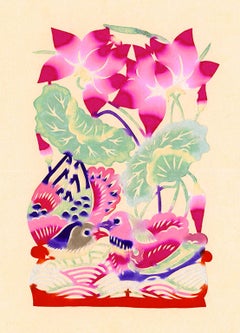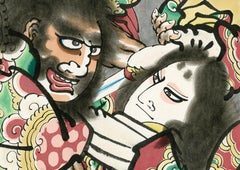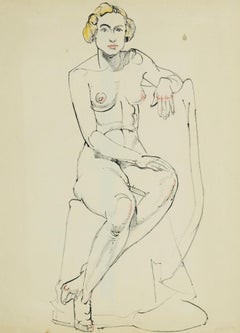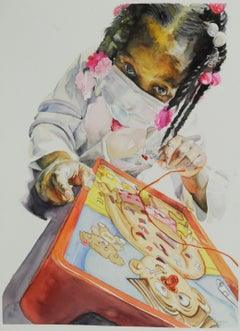Ifpda International Fine Print Dealers Association Drawings and Watercolor Paintings
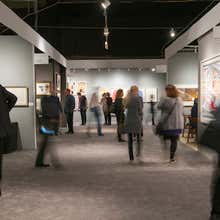
Launched in 1987, the International Fine Print Dealers Association has continually set the bar for quality and ethics while promoting prints as original works of art to generations of collectors, curators and art lovers. With over 160 members in 13 countries, the IFPDA is a worldwide community of leading dealers and editions publishers who represent the full spectrum of printmaking. Each year, the IFPDA hosts the IFPDA Print Fair in New York, the only major fair dedicated to fine-art prints.
1930s Abstract Impressionist Ifpda International Fine Print Dealers Association Drawings and Watercolor Paintings
Watercolor
19th Century Academic Ifpda International Fine Print Dealers Association Drawings and Watercolor Paintings
Chalk
Mid-20th Century Folk Art Ifpda International Fine Print Dealers Association Drawings and Watercolor Paintings
Watercolor
1980s Modern Ifpda International Fine Print Dealers Association Drawings and Watercolor Paintings
Pigment
1920s American Modern Ifpda International Fine Print Dealers Association Drawings and Watercolor Paintings
Ink
2010s Contemporary Ifpda International Fine Print Dealers Association Drawings and Watercolor Paintings
Watercolor
1960s Naturalistic Ifpda International Fine Print Dealers Association Drawings and Watercolor Paintings
Watercolor
1920s American Modern Ifpda International Fine Print Dealers Association Drawings and Watercolor Paintings
Crayon
1920s Ashcan School Ifpda International Fine Print Dealers Association Drawings and Watercolor Paintings
Gouache
1980s Surrealist Ifpda International Fine Print Dealers Association Drawings and Watercolor Paintings
Graphite
1990s Abstract Ifpda International Fine Print Dealers Association Drawings and Watercolor Paintings
Watercolor
1930s American Modern Ifpda International Fine Print Dealers Association Drawings and Watercolor Paintings
Watercolor
1920s Abstract Ifpda International Fine Print Dealers Association Drawings and Watercolor Paintings
Pastel
2010s Contemporary Ifpda International Fine Print Dealers Association Drawings and Watercolor Paintings
Watercolor
1980s American Modern Ifpda International Fine Print Dealers Association Drawings and Watercolor Paintings
Color Pencil
1920s American Modern Ifpda International Fine Print Dealers Association Drawings and Watercolor Paintings
Watercolor
1920s Ashcan School Ifpda International Fine Print Dealers Association Drawings and Watercolor Paintings
Chalk, Pastel
Early 20th Century Ifpda International Fine Print Dealers Association Drawings and Watercolor Paintings
Graphite
1920s American Modern Ifpda International Fine Print Dealers Association Drawings and Watercolor Paintings
Watercolor
1930s American Modern Ifpda International Fine Print Dealers Association Drawings and Watercolor Paintings
Watercolor
1950s Abstract Ifpda International Fine Print Dealers Association Drawings and Watercolor Paintings
Watercolor
1920s Ifpda International Fine Print Dealers Association Drawings and Watercolor Paintings
Watercolor
21st Century and Contemporary Contemporary Ifpda International Fine Print Dealers Association Drawings and Watercolor Paintings
Graphite
1970s American Modern Ifpda International Fine Print Dealers Association Drawings and Watercolor Paintings
Watercolor
Mid-20th Century Surrealist Ifpda International Fine Print Dealers Association Drawings and Watercolor Paintings
Color Pencil, Graphite
19th Century Other Art Style Ifpda International Fine Print Dealers Association Drawings and Watercolor Paintings
Pigment
1870s Ifpda International Fine Print Dealers Association Drawings and Watercolor Paintings
Pencil
2010s Contemporary Ifpda International Fine Print Dealers Association Drawings and Watercolor Paintings
Watercolor
1930s Ifpda International Fine Print Dealers Association Drawings and Watercolor Paintings
Pastel
Early 1900s Ashcan School Ifpda International Fine Print Dealers Association Drawings and Watercolor Paintings
Chalk
20th Century Surrealist Ifpda International Fine Print Dealers Association Drawings and Watercolor Paintings
Watercolor
Mid-20th Century Ifpda International Fine Print Dealers Association Drawings and Watercolor Paintings
Ink
21st Century and Contemporary Photorealist Ifpda International Fine Print Dealers Association Drawings and Watercolor Paintings
Acrylic, Color Pencil, Graphite
2010s Contemporary Ifpda International Fine Print Dealers Association Drawings and Watercolor Paintings
Watercolor
2010s Ifpda International Fine Print Dealers Association Drawings and Watercolor Paintings
Oil Crayon
1940s American Realist Ifpda International Fine Print Dealers Association Drawings and Watercolor Paintings
Watercolor
1980s Contemporary Ifpda International Fine Print Dealers Association Drawings and Watercolor Paintings
Watercolor
1810s Romantic Ifpda International Fine Print Dealers Association Drawings and Watercolor Paintings
Ink
Mid-20th Century Ifpda International Fine Print Dealers Association Drawings and Watercolor Paintings
Ink
1960s American Modern Ifpda International Fine Print Dealers Association Drawings and Watercolor Paintings
Graphite
1740s Romantic Ifpda International Fine Print Dealers Association Drawings and Watercolor Paintings
Ink
Early 20th Century Fauvist Ifpda International Fine Print Dealers Association Drawings and Watercolor Paintings
Crayon, Graphite
1890s American Impressionist Ifpda International Fine Print Dealers Association Drawings and Watercolor Paintings
Watercolor
Early 20th Century American Impressionist Ifpda International Fine Print Dealers Association Drawings and Watercolor Paintings
Watercolor, Pencil
1950s American Modern Ifpda International Fine Print Dealers Association Drawings and Watercolor Paintings
Watercolor, Graphite
Mid-20th Century Ifpda International Fine Print Dealers Association Drawings and Watercolor Paintings
Ink
2010s Contemporary Ifpda International Fine Print Dealers Association Drawings and Watercolor Paintings
Watercolor
20th Century Ifpda International Fine Print Dealers Association Drawings and Watercolor Paintings
Watercolor
1950s Abstract Ifpda International Fine Print Dealers Association Drawings and Watercolor Paintings
Graphite
1930s American Modern Ifpda International Fine Print Dealers Association Drawings and Watercolor Paintings
Watercolor
1960s Expressionist Ifpda International Fine Print Dealers Association Drawings and Watercolor Paintings
Watercolor
Mid-20th Century Ifpda International Fine Print Dealers Association Drawings and Watercolor Paintings
Watercolor
1920s American Impressionist Ifpda International Fine Print Dealers Association Drawings and Watercolor Paintings
Watercolor
1960s American Realist Ifpda International Fine Print Dealers Association Drawings and Watercolor Paintings
Ink
Mid-20th Century Ifpda International Fine Print Dealers Association Drawings and Watercolor Paintings
Ink
1950s American Modern Ifpda International Fine Print Dealers Association Drawings and Watercolor Paintings
India Ink, Watercolor, Pen
Early 1900s Art Nouveau Ifpda International Fine Print Dealers Association Drawings and Watercolor Paintings
Watercolor
1960s Abstract Ifpda International Fine Print Dealers Association Drawings and Watercolor Paintings
Watercolor, Gouache
1930s Abstract Geometric Ifpda International Fine Print Dealers Association Drawings and Watercolor Paintings
Ink, Pen
1960s Realist Ifpda International Fine Print Dealers Association Drawings and Watercolor Paintings
Pastel
Read More
This Tempting Wayne Thiebaud Watercolor Is the Perfect Summer Treat
Although he also produced pensive portraits and idyllic landscapes, the artist’s best-known images are of ice cream, cakes and other colorful sweets.
In This Surreal Painting, the Pink Foot of Patriarchy Squashes a Pumpkin Worshipped by Women
In ‘Gourd,’ Isabel Rock creates a mythic scene that looks fresh and contemporary but feels as old as Eden.
Mid-Century Americans Didn’t Know Antonio Petruccelli’s Name, but They Sure Knew His Art
The New York artist created covers for the nation’s most illustrious magazines. Now, the originals are on display as fine art.
Cecilia Vicuña Merges Politics, Science and Spirituality in Her Poetic Art
The Chilean creator, who has been living in exile in New York for decades, is having a major moment, receiving the biggest exhibitions, commissions and awards an artist could dream of.
Who Are the Most Popular Artists on 1stDibs?
Learn the stories of some of the world's most recognizable artworks and their makers.
Shantell Martin Finds Wonder in Sharing the Creative Process
The visual artist completed a new work in front of a crowd at the 1stdibs Gallery.
